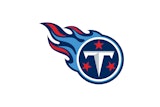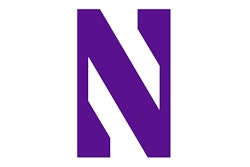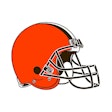New gadgets in the kitchen and at the checkout counter may yet hold the promise of keeping lines, and sales, moving briskly.
There are many ways to snarl an efficient food-and-beverage operation. The server might be sullen and slow. The customer might be indecisive. A canister or keg might need to be replaced. The drawer's short of singles. The customer's credit card won't go through. "Your fries will be up in a minute."
Rethinking this transaction has long preoccupied companies that make food-prep equipment or point-of-sale systems, consultants who design concessions stands and kitchens, and stadium operators and food-service directors who manage the flow of people and food at the source. What would simplify matters, many have concluded, would be erasing as many obstacles as possible so that, in the end, nothing would stand between a customer and his hot dog and beer.
The reality, though, is that higher-tech equipment that could streamline concessions operations and thereby boost revenues faces some daunting obstacles of its own in the sports and recreation market. On the whole, concessions operators remain resistant to the expense and retraining associated with new technologies such as self-service kiosks, smart cards and the like. Older facilities in many cases lack the infrastructure needed to accommodate a wired (or even wireless) computer system. And, as before, the overwhelming majority of customers themselves -- especially the older ones -- find the whole thing intimidating.
Joe Louis Arena, home (except for last year) of the NHL's Detroit Red Wings, was completed in 1979 and to this day has no point-of-sale (POS) system. In fact, the building has no electronics of any kind at its concessions counters but, rather, cash drawers."We're a low-tech building," says Karen Wenson, the arena's senior director of concessions. "We still base everything on inventory usage. It's pretty solid; we count our hot dogs before a game, count them at the end of the night, and then we know how much money we should have. I'm certainly not knocking POS, but I think things are tighter with inventory. Plus, our building is older and we have power issues and things like that. If we wanted to upgrade we could, but it's not in our immediate future."
Barry Freilicher, director of sales for Lafayette, Calif.-based Venue1 ("Convergent Technologies for Sports & Entertainment"), counters that POS systems can easily keep track of stand sheets, the old-style inventory control feature that most operations still use, albeit with a pen and a calculator.
"Would you go to a fast-food restaurant that used a calculator?" Freilicher asks, as an aside. Beyond that, he says, "A good POS system will automatically multiply those figures and print out a report that compares them to the punches on the register, and if there are discrepancies you can focus in on what seems to be out of line rather than count the whole stand inventory again."
Dan House, business information partner with Buffalo, N.Y.-based Delaware North Companies (which provides food services for 60 sports venues and 26 airports), concedes that POS is "proven technology." Costs aside, his biggest beef is that with all the different aspects of food service and POS -- concessions, fine dining and retail on the one hand, checkout and inventory control on the other -- there isn't one technology provider, in his view, that can handle the whole enchilada.
As for the newer gadgetry being touted by the industry's techies, House isn't too enthusiastic."A lot of that stuff is what we would call 'bleeding edge,' " he says. "Who wants to be the guinea pig? New technology has its growing pains, and we're probably risk averse as far as wanting to cut our teeth on stuff like that."
The concessions industry's reticence has a way of driving its more forward thinkers a little crazy. Mike Holtzman, president of San Diego-based Profitable Food Facilities, has tried with some difficulty to get chefs excited about the latest edition of the combi oven. Manufactured by Rationale Cooking Systems of Germany, the so-called "SelfCooking Center" (which was the overall "Best in Show" award winner at the 2004 International Hotel/Motel & Restaurant Show) uses a combination of heat, convection and steam and automatically calculates the cooking time, temperature and humidity level required for the production of hundreds of different items.
"Combi ovens are expensive, but they keep product very moist. You can cook shrimp at 11 in the morning, come back at 5 p.m. and you won't be able to figure out which were just cooked and which have been sitting there for six hours," Holtzman says. "But when we suggested it to the golf course chefs at the U.S. Open, they said, 'No, all we need is convection.' I said, 'Open yourself up to this,' and what I heard was, 'No, no, no.' They're totally resistant to the new technology."
Another recent kitchen gizmo is the high-speed tap, which can pour liquids at incredible rates of speed, increasing beer-keg yields by as much as 30 percent (by limiting foamy waste) and making waiting lines a thing of the past. The concept was first devised in the mid-1990s, separately, by a snack food plant manager in Minnesota and a University of Wisconsin student/inventor. The former went on to develop an electronically controlled tap system that emerges from a portable refrigerated cart; subsequent litigation between inventor and manufacturer resulted in rival products called MasterTap and MegaTap. The latter tinkered with a manual, non-electronic tap that eventually became TurboTap, a finger-long retrofit to existing beer taps that requires just a tweak to a draft beer system's flow rate.
MasterTap, which is manufactured by SHURflo, a Cypress, Calif., company that makes industrial pumps, is the faster of the two, yielding a 16-ounce beer in 1.6 seconds, but it has been a hard sell because of a price that started at $18,000 before dropping to around $8,500. By contrast, TurboTap, marketed by its inventor through Laminar Technologies of Chicago, pours a four-second beer but leases for just $99 a year, per tap.Joe Louis Arena tested one of the full beer dispensing systems, and Wenson pronounced it "awesome." "They poured perfectly, they were cold, you could pour them fast," she says. But, Wenson adds, "The one we looked at cost in excess of $15,000. It was a bit of overkill."
Bill Crider, SHURflo's northeast regional manager, says his company has seen the writing on the wall -- a manually operated, no-frills version is under development that will sell for about $500. "None of us have had great success with it," he concedes of the high-tech carts, which utilize 50 feet of stainless steel tubing and a glycol bath that keeps kegs at a crisp 33 degrees. "The pricing of these units gets to people."
But then, pricing gets a lot of people in the concessions industry. As longtime consultant Chris Bigelow, president of Kansas City, Mo.-based Bigelow Companies, puts it, "Everybody keeps talking about more computerized equipment. The problem is, it generally keeps getting more expensive. And the one thing we're hearing from operators is 'Keep it simple.' They're just not buying into equipment that is supposedly going to make everybody's lives easier. It hits the restaurant and hotel business first, but I've yet to see it trickle down to the concessions industry."
That's about the only rational explanation for why credit card capability has reached just an estimated half -- if that -- of the nation's stadiums and arenas, and even fewer of its smaller recreational venues. Cost, whether related to upgrading the building's infrastructure or to the 2.5 to 3 percent charge on credit card receipts, is a major inhibitor for this traditional cigar-box business.
To facility operators' detriment, says Freilicher. Note, he says, a recent Visa study of 100,000 transactions showing that customers using payment cards spent an average of 30 percent more than those who paid with cash. Or the recent decision by McDonald's to begin taking credit cards -- and to spend millions of dollars advertising this change. "The facts are in," Freilicher says. "Refusing to give up a 3 percent transaction charge, even though you'll make 20 percent more, on average, on the transaction -- that's pretty outmoded thinking."
Granted, the infrastructure issue remains a thorny one. New buildings are being constructed with all the necessary wiring in place, but older facilities (even those completed five or six years ago) require an awful lot of reworking. "A nightmare" is how Danny Brown, vice president of business development with Radiant Systems of Alpharetta, Ga., characterizes running cable at RFK Stadium in Washington, D.C. "I sympathize with them a lot," Brown says of stadium owners.
"The theme park owners used to be the same way. But I think the sports people don't really see how credit cards, gift cards and loyalty systems will deliver a return on their investment. They haven't figured that out yet."
Concessions seems to be an industry that hasn't figured out what its primary focus is. Or maybe it has figured this out, and realized that it always has two purposes that are frequently at odds: To keep the lines moving, and to give great customer service. This was at the crux of the original fight, remember, between McDonald's and Burger King -- the stalwart boasting of its "Millions Served" versus the upstart offering the consumer the opportunity to "Have It Your Way."
Large-venue management increasingly separates the two, with suites and special clubs offering fine dining and cocktails, and concessions stands and hawkers offering quick food and simple drink to be eaten and quaffed back in the seating bowl. For a while, the trend seemed to be to blur the lines, offering increasingly highbrow fare right to the general-admission seat, but in-seat service (and the attendant high-tech Internet ordering capability) appears to be on the wane. Newer facilities make a show of their full-service suites and full-scale restaurants, capturing more fans for complete pregame, postgame and even during-game and off-season meals. New venues are also being designed with more points of sale and more amenities such as closed-circuit TVs showing the game in progress, making going to the concessions stand more convenient.
But only if the lines don't get too long.A number of cutting-edge technologies promise to solve that problem, one transaction at a time. "Stadiums are about speed," says Bigelow. "They have to move those people through. If a POS system can, say, help them move the lines 10 seconds faster per individual, do the math: Thirty thousand calculations at 10 seconds per transaction equals 300,000 seconds. That's a lot of time. But even water parks can benefit from that type of a system. When you're grilling outside and you send somebody over with a bun, you don't know whether that's a chicken or a burger or a fish. Even a basic POS system, two screens, will simplify that kind of transaction."
One obstacle, Holtzman believes, is that software companies can't seem to resist complicating matters. As an example, he mentions food costing -- punch your recipes into your POS system, and you'll know exactly what your usage should be for all ingredients."If I can get a burger count, I can know that if there were 50 in a case and I sold 40, 10 are getting thrown away. That's effective," Holtzman says. "But for tuna salad, you could ask it, 'How much mayo am I supposed to have used in a perfect utilization world?' Is that really that helpful? I think it's a little beyond the scope. Sometimes the technology goes a little too far."
That's the view of a fair number of Americans who have arrived at their airport, supermarket or local Home Depot and been confronted with self-service check-in or checkout. Companies like Radiant Systems, which makes self-service kiosks that have largely been embraced as automated "Will Call" windows for picking up movie-theater tickets, tout the systems' simplicity and speed. Food service, others insist, is a different animal.
"My experience with kiosks in a fast-food environment is that they aren't working yet," Bigelow says. "One, the initial cost has been pretty expensive, so getting someone to even try it is the first hurdle. Two, I tried out the touch-screen ordering system in a Wawa store's deli, and it had to have taken five times as long for me to punch in the order as it would have taken if they'd just let me say it to them. I mean, the lady was standing right there; I could have just said, 'Give me a BLT on whole wheat bread.' Obviously the airport kiosks have speeded up what is a simple transaction -- two or three buttons, you're done. But you get into the food business, where you have all these modifiers, and then they all want to build a bigger sale -- 'Would you like chips with that?' -- by the time you answer these 90 questions, your sandwich could have been made and handed to you. You could probably have eaten it by then."
For his part, Holtzman concedes that users' reticence might fall along age lines. Cashierless systems -- place your own order, insert your card, pick up your receipt and food -- have just hit Disney attractions, and while the equipment might befuddle some parents, Holtzman's 10-year-old is a big fan. "I definitely saw some older people struggle with it, but my daughter was all kicked about ordering her meal. She doesn't want to eat anywhere else."
Part of the trouble with self-service is that, as Bigelow puts it, "the speed of service is in the hands of your customer, not your employee." Wenson knows that to be true. Joe Louis Arena has for years had a beer stand called the Ice Rink where customers can pour their own beer. Unfortunately, in order to meet legal requirements and deter waste and theft, the stand requires one employee checking IDs, as well as two who are there to help these non-professional bartenders get a successful pour.
"It's not all that quick," Wenson admits. "These are people who aren't used to pouring beers. It often takes a few tries, since a lot of time the first glass is all foam. It's a novelty. It's not one of our busier beer stands."
At the food counter, Wenson adds, customers often change their orders on the fly, something that's sometimes easier to cross out with a pencil than to scroll through screens or register tapes to fix. Says Bigelow, "On paper, everybody will tell you that a cafeteria line should move the fastest, because the food's prepared, it's sitting there, you pick up what you want and you pay. But every concessionaire who's tried the cafeteria system has gotten rid of it, because you're only as fast as your slowest customer. One person stops because they want something special, and the entire line stops."
It might be human nature to claim that your particular business doesn't follow the rules of others, that what you offer is "special." But as the concessions industry splits into warring "Machines Rule" and "People First" camps, it's hard to find fault with the argument that food is more than mere "product.""Face it," says House. "We provide a different kind of service, where there has to be an interaction with a human being."
Bigelow recently attended an industry trade show where a panel discussed the pros and cons of Internet ordering in luxury suites. He was surprised to hear how many facility operators had experienced drops in sales after instituting the more convenient computer system."
People order less because there's no human contact, no one to talk to about having a certain bottle of wine with this or that," Bigelow says "Even if they have the prompts on the computer, it doesn't do the job. The customer wants the personal service: 'I just spent $500,000 on this suite, could you please answer the phone when I call you and ask what you would suggest?' Basically, it's like planning a party, and they don't want a computer to be their only contact with the food service company."
This, Bigelow says, dovetails neatly with the trend (which equipment like the combi oven is helping drive) toward freshly prepared foods, actual meals instead of the usual hot dog and Coke. "Except for football, where there's a huge crush at halftime, the days of pre-making and wrapping things up in a warming drawer are definitely going by the wayside," he says.
"As we're building new facilities with more points of service, you're able to have a slower form of service, and that's what the customer wants. They have to wait a little longer, but they get to see the product made, and they know it's fresh. They don't want it so technologically advanced that it feels hermetically sealed, pre-prepared and prewrapped."
On the other hand, Burger King is still a distant second to McDonald's.
































